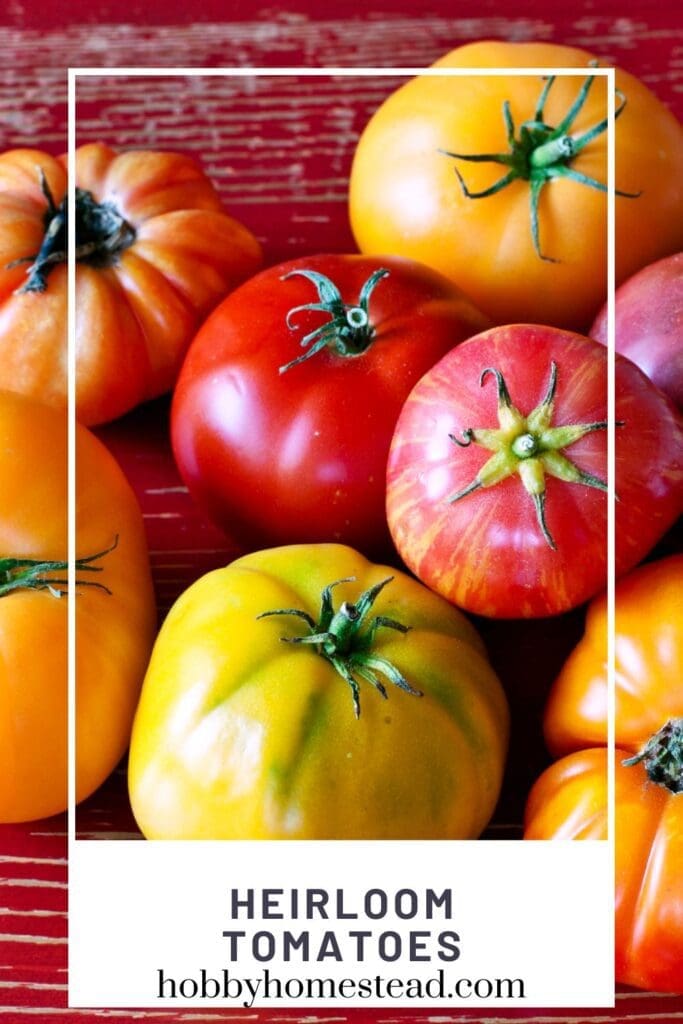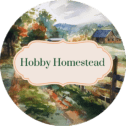Last updated on August 20th, 2024 at 08:46 pm
What is the best trick to store tomatoes? Storing them the right way can make all the difference between bland, mealy tomatoes and vibrant, flavorful ones. By following these farmer-approved tips, you can ensure your tomatoes maintain their peak flavor and last as long as possible.
Whether you’re savoring a simple tomato sandwich or preparing a batch of tomato sauce, these storage methods will help you enjoy the fruits of your labor—or your local farmers’ hard work—throughout the year.
The Best Trick to Store Tomatoes, According to Farmers
The top trick for storing tomatoes, according to many farmers and experts, is to store them at room temperature and stem-side down. This method helps protect the stem scar from exposure to air, moisture, and contaminants, which can lead to spoilage.
Keeping tomatoes stem-side down is thought to seal off the area where the tomato was attached to the vine. Reducing the chance of bacteria or mold entering and helping the tomato retain its juiciness for longer.
Additionally, storing tomatoes at room temperature, away from direct sunlight, is crucial. Refrigeration can cause tomatoes to become mealy and lose their flavor. So keeping them on the kitchen counter until they’re fully ripe is generally recommended.
Once they’re ripe, you can store them in a cooler spot if needed. However, room temperature is ideal for maintaining their best flavor and texture.
Table of contents
- The Best Trick to Store Tomatoes, According to Farmers
- The Best Way to Store Tomatoes: Insights from Farmers
- Temperature and Location: Finding the Sweet Spot
- Storing Tomatoes Methods: Handle with Care
- Ripening Tips: Timing is Everything
- Handling Ripe Tomatoes: Enjoying the Harvest
- Long-Term Storage: Saving the Summer’s Bounty
- Farm-to-Table Freshness: Support Local Farmers
- Tomato Season is Short, Enjoy It
- References

Stem up or Stem down Debate
Tomatoes done right. There’s some debate about the best way to store tomatoes. The recommendation to store tomatoes stem-side down, is referenced in the article from Allrecipes. It’s based on the idea that it can help reduce the exposure of the stem scar to air. (Where the tomato was attached to the vine). This might slow down the spoilage process. This method is said to keep the tomatoes juicier for longer by reducing the risk of mold, bacteria, or other contaminants from entering through the stem scar.
On the other hand, the suggestion to store tomatoes stem-side up is often mentioned to prevent the weight of the tomato from pressing on the softer stem area. This could potentially lead to bruising and faster spoilage.
Both methods have their merits:
- Stem-side down. Can potentially reduce moisture loss and slow down spoilage by protecting the stem scar.
- Stem-side up. Helps avoid bruising and damage to the delicate stem area, especially for larger, heavier tomatoes.
Ultimately, the best method may depend on the specific circumstances, such as the type of tomato (e.g., larger heirloom varieties vs. smaller cherry tomatoes) and how long you plan to store them.
The Best Way to Store Tomatoes: Insights from Farmers
Tomatoes, whether fresh from your garden or picked up at your local farmers’ market, are one of the ephemeral joys of summer. Their juicy, sweet flavor can elevate everything from a simple tomato sandwich to a fresh Caprese salad.
However, the way you store tomatoes can significantly impact their taste, texture, and shelf life. We’ve consulted with farmers and home gardeners to bring you the best tips for storing tomatoes, ensuring you get the most out of your bountiful harvest.
Temperature and Location: Finding the Sweet Spot
Room Temperature is Key. For the best flavor and texture, it’s essential to store tomatoes at room temperature. This is especially true for fully ripe tomatoes, which should be kept on the kitchen counter away from direct sunlight.
Cold temperatures, like those in the fridge, can cause a firmer tomato to become mealy and lose its natural sweetness.
Avoid the Fridge. While it might be tempting to pop your fresh tomatoes in the refrigerator, especially when you need extra time to use them, this is not the best way to store tomatoes.
Colder temperatures slow down enzyme activity, leading to a loss of flavor and a change in texture. The rule of thumb here is to keep them out of the fridge unless they’ve been sliced or are becoming overripe tomatoes.
Consider a Root Cellar. If you’re fortunate enough to have a root cellar or a wine cellar, these can offer ideal temperatures for long-term storage of unripe tomatoes, particularly as the end of the growing season approaches.
The cooler, consistent temperatures help minimize harm and moisture loss, preserving your tomatoes longer than room temperature storage.

Storing Tomatoes Methods: Handle with Care
Single Layer, Stem Side Up. To prevent bruising and to allow air to circulate around your tomatoes, store them in a single layer with the stem side facing up. This is particularly important for larger tomatoes and heirloom varieties, which can be more delicate. Keeping the stem side up also helps reduce moisture loss from the area where the tomato was attached to the main stem, leading to better results and a longer shelf life.
Paper Bags for Ripening. If you have unripe or green tomatoes, the easiest way to speed up the ripening process is by placing them in a paper bag. Adding a ripe banana or apple to the bag will release ethylene gas, a natural compound that encourages tomatoes to ripen.
This method works well for green fruit picked early due to weather or at the end of the growing season. Katie Rose Seward, a well-known farmer and gardener, suggests checking the tomatoes daily until they reach peak ripeness.
Avoid Plastic Bags. Storing tomatoes in plastic bags is a bad idea as it traps moisture, which can lead to early blight or other fungal diseases. Instead, keep them in breathable containers like a cardboard box or a basket, ensuring they remain fresh and firm.
Ripening Tips: Timing is Everything
Harvesting at Peak Season. The best time to pick tomatoes is when they’ve reached peak ripeness on the vine. For homegrown tomatoes, this usually happens in late spring through early July, depending on your location and the tomato varieties you’re growing. Determinate tomatoes tend to ripen all at once, making it crucial to have your storage methods ready.
Green Top Tomatoes. If you’ve got tomatoes with a green top or those that haven’t fully ripened, consider storing them with ripe fruits in a warm spot to encourage ripening. This method is particularly useful for heirloom tomatoes, which may not all ripen uniformly. Once ripened, use these tomatoes within a couple of days for the best flavor.

Handling Ripe Tomatoes: Enjoying the Harvest
Use Promptly for Best Flavor. Ripe tomatoes are best enjoyed fresh, whether in a tomato sandwich, salad, or homemade tomato sauce. Once ripened, they should be used within a couple of days to preserve their flavor and texture. If you find yourself with more tomatoes than you can use, consider making tomato paste or tomato juice to extend their use.
Cut Tomatoes Need Special Care. If you have cut tomatoes, it’s a good idea to store them in an airtight container in the fridge. While cold temperatures can affect the texture, it’s necessary to keep cut tomatoes fresh and safe to eat. They should be used within a day or two to prevent them from going bad.
Long-Term Storage: Saving the Summer’s Bounty
Freezing for Future Use. When you have a bountiful harvest of juicy tomatoes, freezing is an excellent option for long-term storage. Larger tomatoes can be blanched, peeled, and frozen whole or in chunks. This is a great way to preserve tomatoes for sauces, soups, and stews during the colder months.
Preserving Heirloom Varieties. Heirloom varieties, known for their unique flavors and colors, can also be preserved by canning or making them into tomato products like salsa or chutney. These methods not only extend the shelf life of your tomatoes but also allow you to enjoy the taste of summer well into the winter.
Storing Green Tomatoes. For green tomatoes that won’t ripen before the season ends, consider storing them in a cool, dark place like a root cellar or a garden shed. Check them regularly, and as they ripen, bring them into the kitchen to enjoy.
Farm-to-Table Freshness: Support Local Farmers
Buy Local for Better Tomatoes: Whenever possible, source your tomatoes from local farmers’ markets or grow your own. Not only do you get fresher tomatoes, but you’re also supporting local agriculture. Freshly picked, vine-ripened tomatoes from local farms often have the best flavor and fewer issues with storage temperatures.
Tomato Season is Short, Enjoy It
The peak season for tomatoes is relatively short, from early summer to late summer. Make the most of this time by enjoying tomatoes fresh, storing them properly, and preserving them for the months ahead.
The good news is that with the right storage techniques, you can enjoy the taste of summer tomatoes even as the weather cools.
References
Allrecipes. Best Way to Store Tomatoes, According to Farmers. This article discusses the benefits of storing tomatoes stem-side down and provides insight into why this method might help prolong the freshness of tomatoes.
Serious Eats. The Best Way to Store Tomatoes. This article covers various methods for storing tomatoes, including the importance of keeping them at room temperature.
The Kitchn. How to Store Tomatoes So They Stay Fresh Longer. This article offers tips on storing tomatoes, emphasizing the importance of keeping them out of the fridge until they’re fully ripe.


